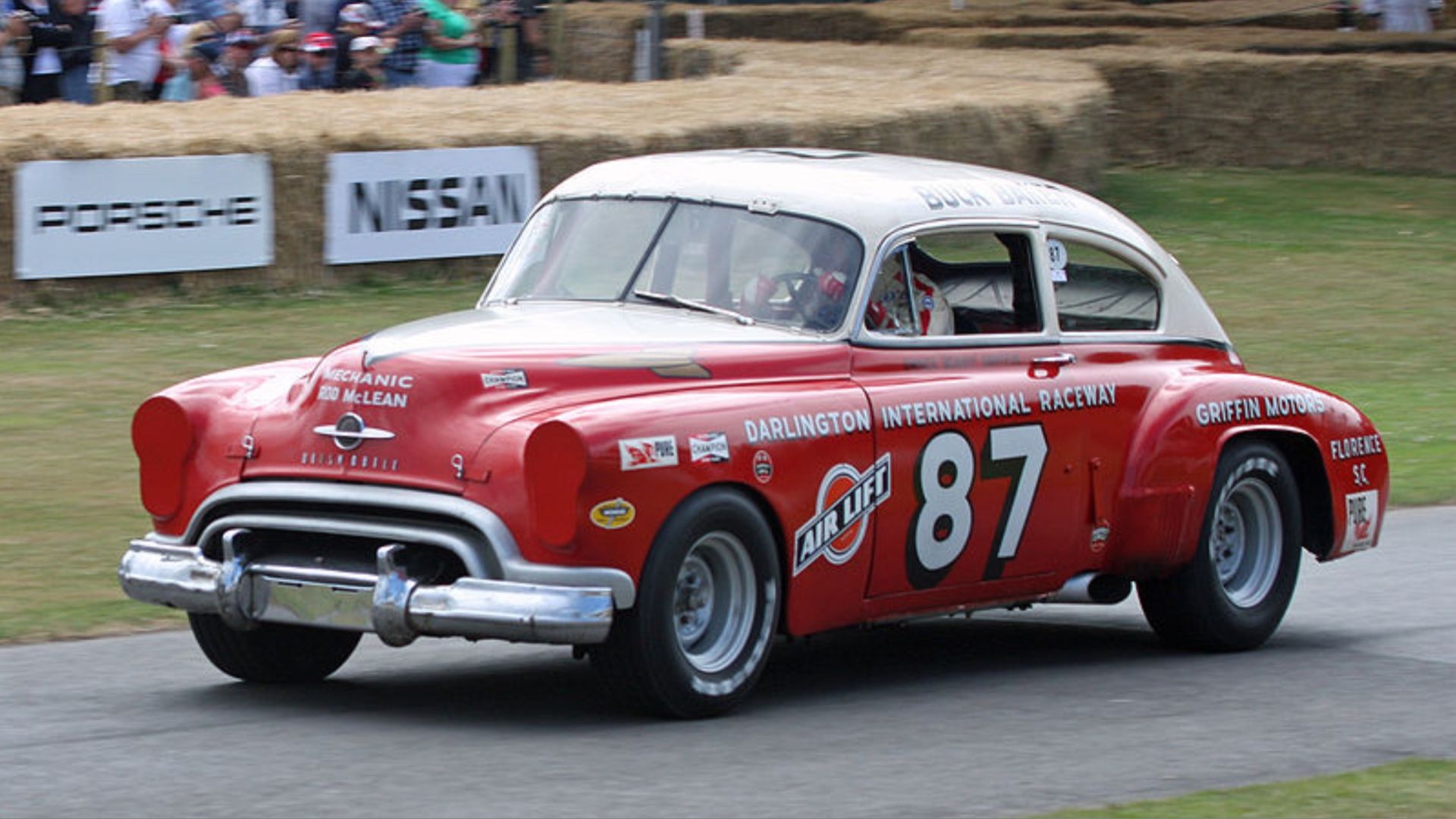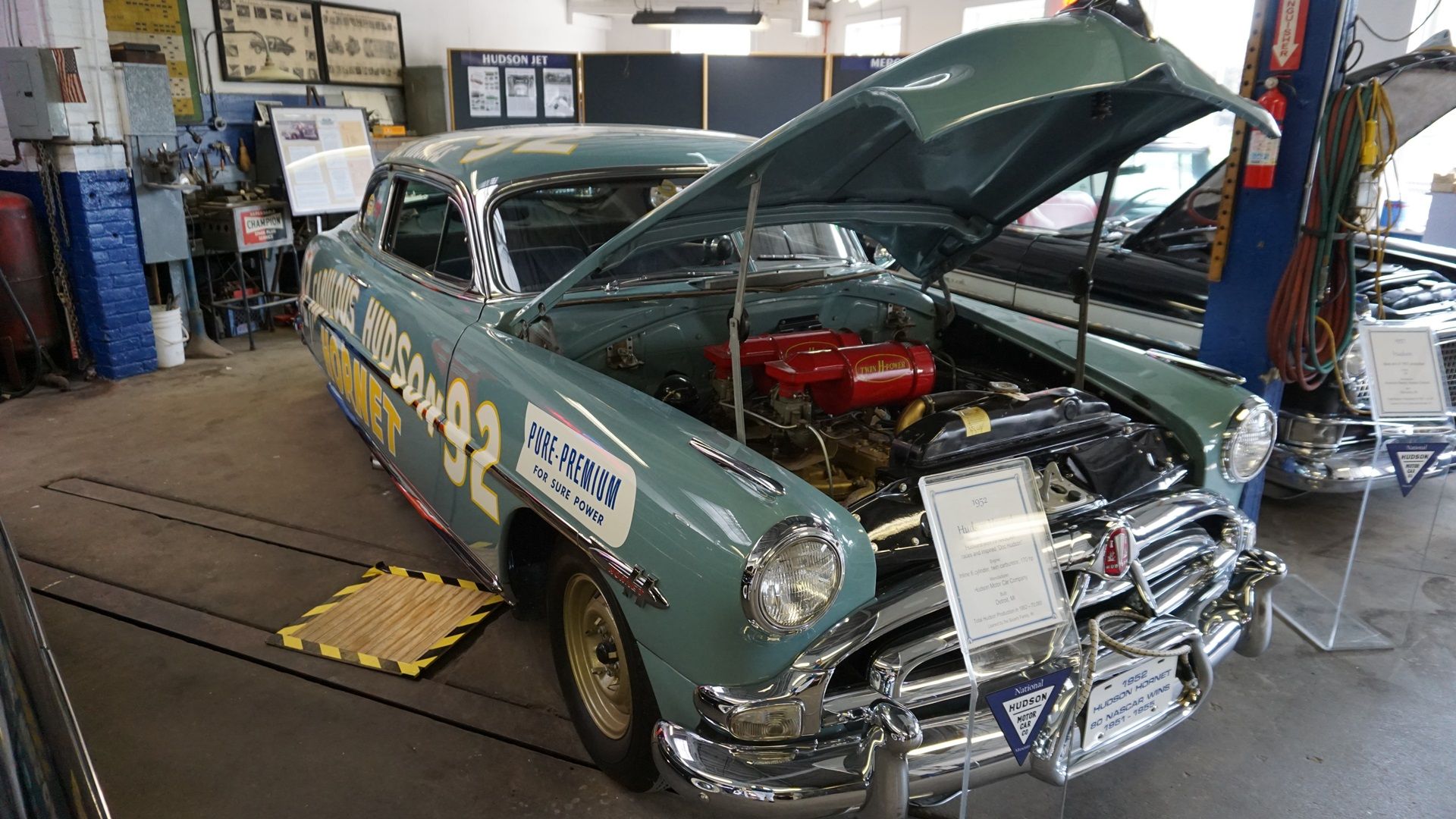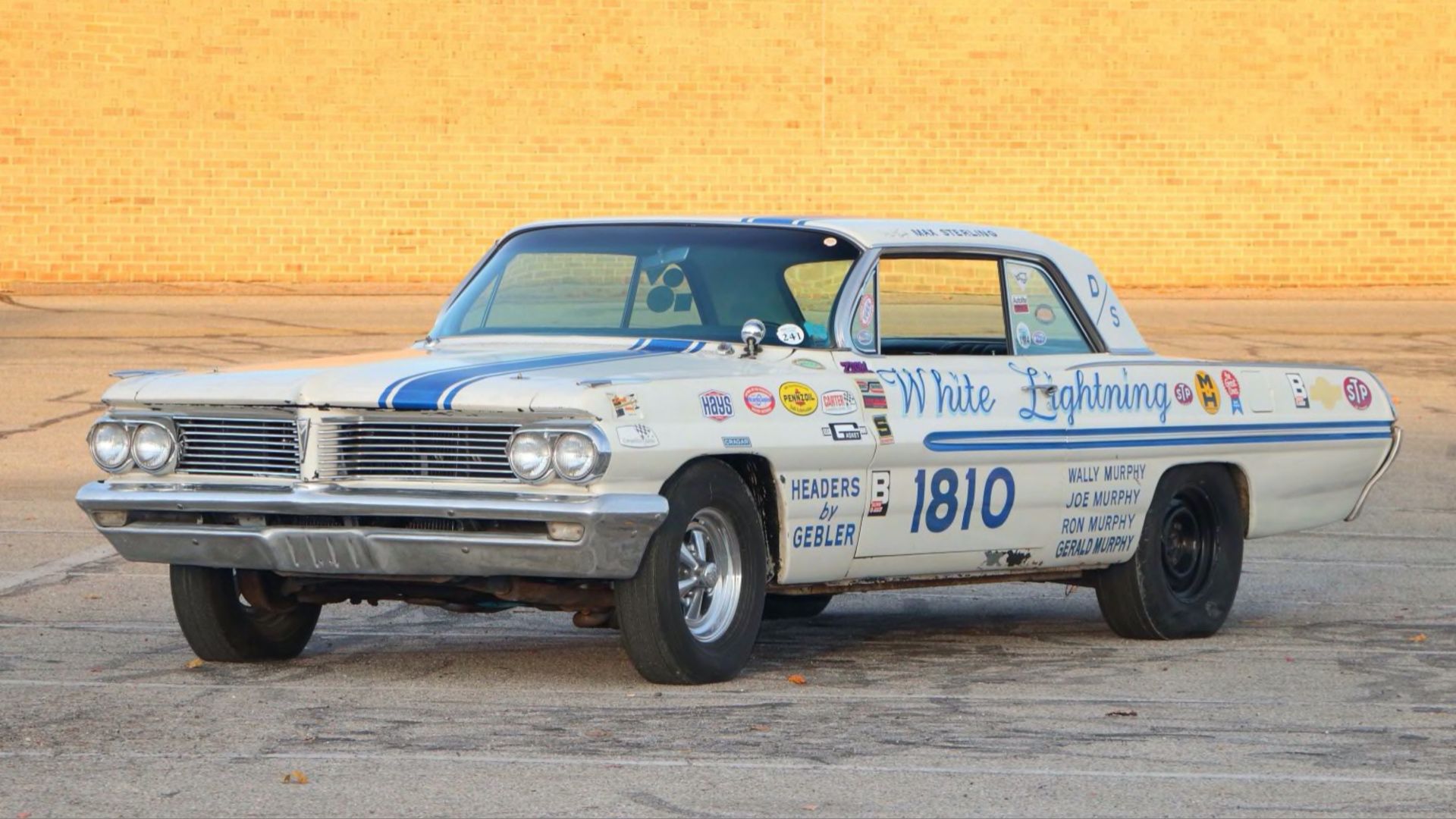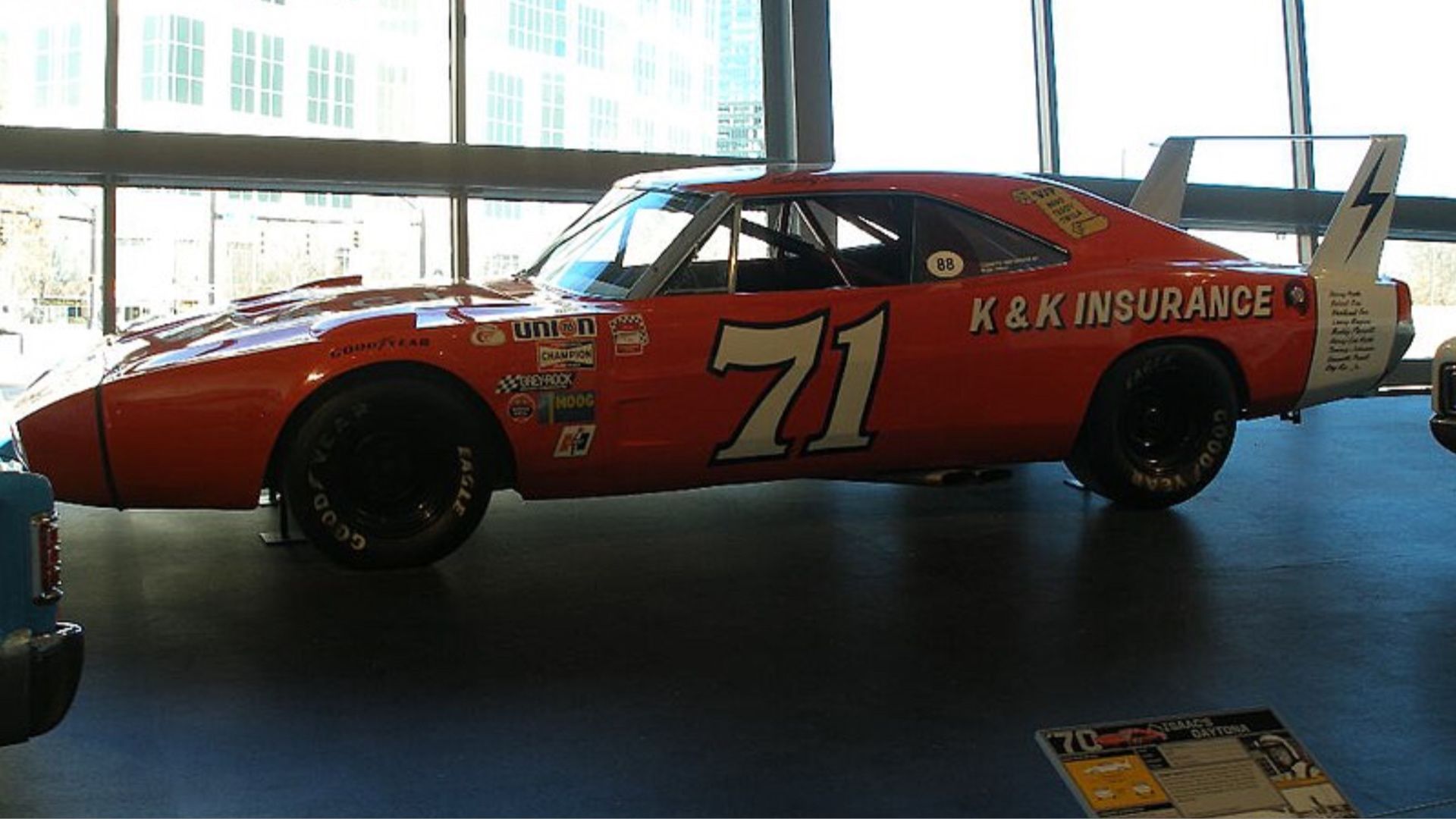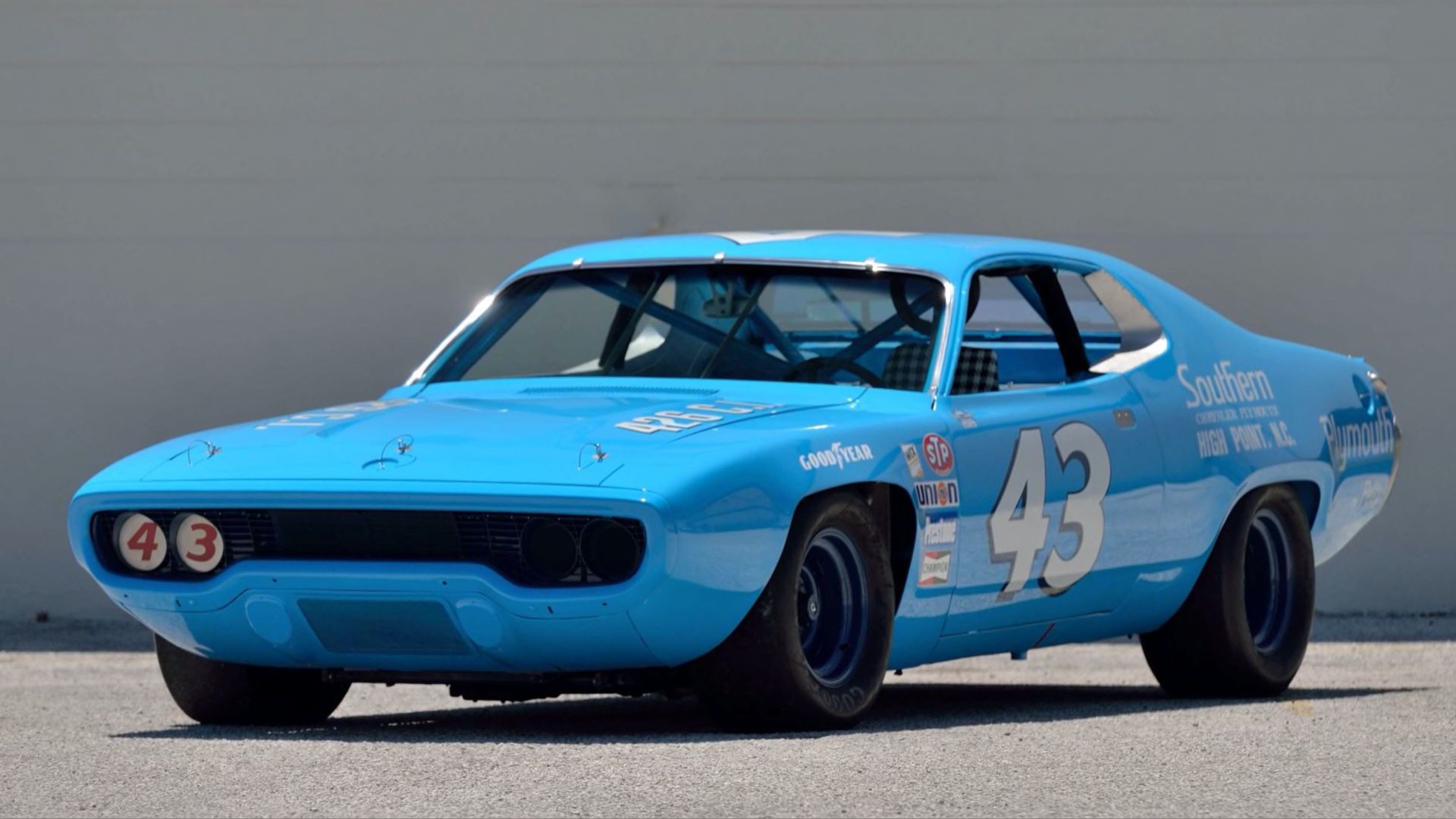NASCAR grew out of the Prohibition era when moonshiners wanted to prove who had the fastest car to outrun the Revenuers. From the beginning, these competitions were stock car races, meaning they used the same vehicles anyone could walk into a dealership to purchase. NASCAR stands for the National Association for Stock Car Auto Racing, but the rides they use now are anything but stock.
Until 1980, vehicles competing in NASCAR more or less looked like their showroom counterparts, but the Generation 3 cars became very similar to one another. This was when NASCAR introduced the restriction plate, as well as several regulations to make all the cars equal. Even today, with the Next Gen vehicles, a Chevy Camaro ZL1 is indistinguishable from a Toyota Camry TRD, and neither of them bears any resemblance to anything for sale to the public.
The era of real stock car racing began in 1949 and ran until 1980. There was an old saying that went: “Win on Sunday, sell on Monday” because when people saw Richard Petty take the checkered flag in a Plymouth Belvedere, they wanted one. The beautiful part of this era was, that a fan could more or less get the same car as their favorite driver. Some of the greatest cars to ever win a NASCAR Cup Series were parked in driveways and winning red light challenges.
In order to give you the most up-to-date and accurate information possible, the data used to compile this article was sourced from various manufacturer websites and other authoritative sources, including the NASCAR Hall of Fame, Automobile Catalog, Hagerty, and MotorTrend. Since this is a stroll (sprint) down memory lane, the cars are listed in chronological order. Also, obviously, NASCAR race cars have been souped up and race-tuned, so the power and performance stats represent the cars the public could purchase.
10 1949 Oldsmobile Rocket 88
Red Byron
For its inaugural Cup Series in 1949, NASCAR introduced the “Strictly Stock” division and ran 7 races on dirt oval tracks as well as the Daytona Beach street/beach course. Legendary racer Red Byron took the championship in his 1949 Oldsmobile Rocket 88, winning two races and four top-ten finishes. Byron only competed in six of the eight races but still won on points.
Performance Specifications
|
Engine |
303ci Rocket V-8 |
|
Transmission |
Three-speed manual |
|
Power |
135 horsepower, 263 pound-feet of torque |
|
Driveline |
Rear-wheel drive |
|
0-60 MPH |
12.0 seconds |
|
Quarter-mile |
18.0 seconds |
|
Top Speed |
97 mph |
(Specs sourced from Automobile Catalog)
The 1949 Oldsmobile Rocket 88 is often regarded as the first muscle car or, at the very least, the spiritual godfather. Oldsmobile came up with the brilliant idea of taking a powerful engine from their biggest model and putting it into a smaller, lighter car to make the first affordable performance ride. The Rocket 88 transformed Oldsmobile from a stuffy brand to the coolest automaker in Detroit.
9 1952 Hudson Hornet
Tim Flock
By 1952, NASCAR was hosting 34 races in their Grand National Series, now called the Cup Series, and Tim Flock won the championship in a Hudson Hornet, taking eight checkered flags and 25 top-ten finishes. That season was dominated by drivers in Hudson cars, who won 27 of the 34 scheduled races, according to the NASCAR Hall of Fame.
Performance Specifications
|
Engine |
308ci Straight-six |
|
Transmission |
Three-speed manual |
|
Power |
145 horsepower, 257 pound-feet of torque |
|
Driveline |
Rear-wheel drive |
|
0-60 MPH |
12.8 seconds |
|
Quarter-mile |
19.0 seconds |
|
Top Speed |
112 mph |
(Specs sourced from Automobile Catalog)
Hudson was the first automaker to get involved in NASCAR racing and the 1952 “Fabulous Hudson Hornet” was designed specifically to dominate, which it did. The Hornet’s high-compression straight-six was aerated by a rudimentary ram-air system and out-performed all the other automakers’ V-8s. Also, its low center of gravity gave it an advantage over the competition it was racing against.
8 1954 Chrysler New Yorker
Lee Petty
Lee Petty wasn’t just a racing legend, he was the patriarch of the NASCAR Royal Family Richard Petty’s father and Kyle Petty’s grandfather, as well as Adam Petty’s great-grandfather. He was also the first NASCAR superstar, winning three Grand National Series championships. In 1954, his first, he did it in a Chrysler New Yorker with seven wins and 32 top tens.
Performance Specifications
|
Engine |
331ci FirePower V-8 |
|
Transmission |
Two-speed automatic |
|
Power |
180 horsepower, 312 pound-feet of torque |
|
Driveline |
Rear-wheel drive |
|
0-60 MPH |
10.0 seconds |
|
Quarter-mile |
16.7 seconds |
|
Top Speed |
120 mph |
(Specs sourced from Automobile Catalog)
The New Yorker was generally known as a slow-rolling luxury land yacht, but 1951 saw the introduction of the Chrysler FirePower Hemi V-8, which was a game-changer in auto racing. Cranking out 180 horsepower, it was easily a second faster in all performance metrics than any other engine out there and had a top speed that couldn’t be beaten.
7 1956 Chrysler 300-B
Buck Baker
Buck Baker won 14 races and had 39 top-ten finishes to destroy the competition in the 1956 NASCAR Grand National Series, finishing 400 points above the next closest racer. He achieved this feat in a Chrysler 300B, which was part of an amazing Mopar team that season. The Chrysler and Dodges of Carl Kiekhaefer’s racing team dominated the year, including claiming all 16 victories in the summer.
Performance Specifications
|
Engine |
354ci FirePower V-8 |
|
Transmission |
Three-speed automatic |
|
Power |
355 horsepower, 385 pound-feet of torque |
|
Driveline |
Rear-wheel drive |
|
0-60 MPH |
8.5 seconds |
|
Quarter-mile |
16.3 seconds |
|
Top Speed |
124 mph |
(Specs sourced from Automobile Catalog)
The Chrysler 300 letter series were high-performance luxury cars made from 1955 to 1965. The 300B was the 1956 entry and came with a choice of a 340 horsepower or a 355 horsepower 354ci Hemi V-8. Either way, it was the fastest thing available then, but the higher option level was the first American engine to achieve one horsepower per cubic inch of displacement.
6 1960 Chevrolet Impala
Rex White
The 1960 NASCAR Grand National Series Season had almost 200 drivers who competed in at least one race, but it was Rex White, with 40 starts, who took the championship. With three pole positions, six wins, 35 top-ten finishes, and 25 top-five finishes, White held off the nearest competitor, a young Richard Petty, by nearly 3,000 points, and he did it in a 1960 Chevrolet Impala.
Performance Specifications
|
Engine |
348ci Turbo Thrust V-8 |
|
Transmission |
Four-speed Manual |
|
Power |
350 horsepower, 362 pound-feet of torque |
|
Driveline |
Rear-wheel drive |
|
0-60 MPH |
7.1 seconds |
|
Quarter-mile |
15.7 seconds |
|
Top Speed |
127 mph |
(Specs sourced from Automobile Catalog)
Chevy made almost a half-million Impalas in 1960, and it would eventually be the favored year for low-riders. The ones equipped with the 348 Special Super Turbo-Thrust with triple two-barrel carburetor engines, however, were too fast to be scraping the pavement. With 350 horsepower, the ’60 Impala wasn’t just a NASCAR, it was a factory drag car.
5 1962 Pontiac Catalina
Joe Weatherly
Joe Weatherly was known for his sense of humor and was quite the character, but he was also one hell of a good driver. He began racing in the NASCAR Grand National Series in 1950, but because he lacked the resources, he only participated in a few races per season, often with a borrowed car. In 1962 however, he had a solid team behind him and a fast Pontiac Catalina that propelled him to the championship with nine wins and 45 top-ten finishes.
Performance Specifications
|
Engine |
421ci Super-Duty V-8 |
|
Transmission |
Three-speed automatic |
|
Power |
405 horsepower, 425 pound-feet of torque |
|
Driveline |
Rear-wheel drive |
|
0-60 MPH |
5.4 seconds |
|
Quarter-mile |
13.9 seconds |
|
Top Speed |
150 mph |
(Specs sourced from MotorTrend)
Pontiac sold over a million Catalinas in the early 1960s, but it’s not a nameplate a lot of muscle car enthusiasts know about. In 1962, Pontiac dropped 421ci Super-Duty V-8s into around 160 mid-size Catalinas for drag racing and NASCAR purposes. The success of these street monsters inspired the creation of the GTO as a performance ride geared toward younger buyers.
4 1964 Plymouth Belvedere
Richard Petty
It’s hard to follow in the footsteps of a legend, but Richard Petty not only matched his father Lee’s success but surpassed it with seven Cup Series championships and 200 race victories. His first championship came in 1964 in a Plymouth Belvedere with nine wins and 43 (familiar number) top-ten finishes. Richard Petty has raced cars with multiple manufacturers, but six of his seven championships were in a Plymouth or Dodge.
Performance Specifications
|
Engine |
426ci Hemi V-8 |
|
Transmission |
Four-speed manual |
|
Power |
425 horsepower, 490 pound-feet of torque |
|
Driveline |
Rear-wheel drive |
|
0-60 MPH |
5.6 seconds |
|
Quarter-mile |
13.7 seconds |
|
Top Speed |
149 mph |
(Specs sourced from Automobile Catalog)
The 1962 Plymouth Belvedere was the lucky first car to receive the iconic 426 Hemi V-8 engine, and it proved to be the fastest car any American automaker had produced up until that point. Hemi-powered Belvederes finished first, second, and third at the 1962 Daytona 500, with Richard Petty’s Pontiac taking the checkered flag.
3 1965 Ford Galaxie 500 XL
Ned Jarrett
After Richard Petty smoked the competition in 1964 with his Belvedere 426, NASCAR banned the Hemi engine until it sold at least 500 production vehicles equipped with one. As such, Chrysler sat out the 1965 season, which opened up the door for Ned Jarret and his Ford Galaxie to take the Grand National Series championship with 13 wins and 45 top-ten finishes.
Performance Specifications
|
Engine |
427ci V-8 |
|
Transmission |
Four-speed manual |
|
Power |
425 horsepower, 480 pound-feet of torque |
|
Driveline |
Rear-wheel drive |
|
0-60 MPH |
5.4 seconds |
|
Quarter-mile |
14.1 seconds |
|
Top Speed |
143 mph |
(Specs sourced from Automobile Catalog)
The Galaxie was Ford’s answer to the Chevy Impala and Plymouth Belvedere in full-size performance cars. The Galaxie 500 XL was the top of the line in 1965 and came standard with a 352ci V-8, but according to Curbside Classic, the 427 was an option. Despite having an extra inch of displacement, the 427 wasn’t quite as powerful as the 426 Hemi, but Mopar was sidelined in 1965, so Blue Oval had no worries at the track.
2 1970 Dodge Charger Daytona
Bobby Isaac
Bobby Isaac won the 1970 NASCAR Grand National Series champion driving the “Winged Warrior” Dodge Charger Daytona. After that season, NASCAR banned all “aero-cars” including the Plymouth Superbird and the Mercury Cyclone Spoiler II. The thing is, Isaac only won 11 of the 47 races he started that season, so it’s not like Daytona was unbeatable.
Performance Specifications
|
Engine |
426 Hemi V-8 |
|
Transmission |
Four-speed manual |
|
Power |
425 horsepower, 490 pound-feet of torque |
|
Driveline |
Rear-wheel drive |
|
0-60 MPH |
5.2 seconds |
|
Quarter-mile |
13.7 seconds |
|
Top Speed |
137 mph |
(Specs sourced from Automobile Catalog)
Dodge had high hopes for the Charger 500 in 1968 in the NASCAR competition, but the dominant street machine wasn’t aerodynamic or the best oval track performer. To remedy the situation, engineers came up with the hyper-aerodynamic Charger Daytona with its big nose cone and even bigger rear wing spoiler. Thanks to NASCAR homologation requirements, these cool weird rides were sold to the public.
1 1971 Plymouth Road Runner
Richard Petty
For his third NASCAR championship in 1971, Richard Petty racked up 4,435 points with 21 victories and 41 top-ten finishes. He achieved this dominant performance behind the wheel of a Plymouth Road Runner. 1971 was also the year that the Grand National Series became the Winston Cup Series when drivers were encouraged to smoke cigarettes by tobacco company sponsor R.J. Reynolds.
Performance Specifications
|
Engine |
426ci Hemi V-8 |
|
Transmission |
Four-speed manual |
|
Power |
425 horsepower, 490 pound-feet of torque |
|
Driveline |
Rear-wheel drive |
|
0-60 MPH |
5.7 seconds |
|
Quarter-mile |
14.0 seconds |
|
Top Speed |
134 mph |
(Specs sourced from )
It’s unclear how much cigarette smoking Richard Petty did, but his Road Runner could certainly smoke everything off the line. ’71 was the first year of the redesigned second-gen Road Runner, taking it from a bare-bones box to a sleek super-sized pony car. Equipped with a 426 Hemi, there was nothing else on the road that could touch it. The improved aerodynamic design made for great handling at high speeds, and Petty’s amazing 1971 NASCAR season is all the proof of that.
Credit: Source link
